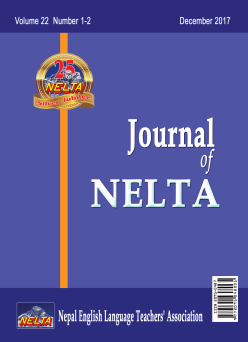Should we Bend towards Blending? How?
DOI:
https://doi.org/10.3126/nelta.v22i1-2.20041Keywords:
Blended learning, Educational media, Frameworks for blending, New innovationsAbstract
Blended learning that combines face-to-face and online educational delivery can occur at activity, course, program, and institution level. In this study, course-level blending in Critical Discourse Analysis (CDA) course was examined. The students of face-to-face mode were enrolled in Moodle. However, their participation in Moodle was optional (i.e. low level of blending). Data collected from a class test and end-of-semester questionnaire survey suggest that blending does have a positive effect on learning achievement and students do perceive blending positively. Overall, the study shows optimism towards the prospects of blended learning. However, for the successful integration of Moodle, easy access to the Internet and orientation for using Moodle are to be ensured.
Journal of NELTA , Vol. 22, No. 1-2, 2017 December, page: 54-67
Downloads
Downloads
Published
How to Cite
Issue
Section
License
© Nepal English Language Teachers’ Association (NELTA)
Authors are required to transfer their copyright to the Nepal English Language Teachers' Association (NELTA)
The Journal of NELTA is copyright by Nepal English Language Teachers’ Association (NELTA). Apart from citing/referencing in academic works, no part of any materials may be reproduced by any process without prior written permission from its copyright owner – NELTA. Requests and enquiries concerning reproduction and rights may be addressed to NELTA or the editorial board at neltaeditorialboard@gmail.com.




